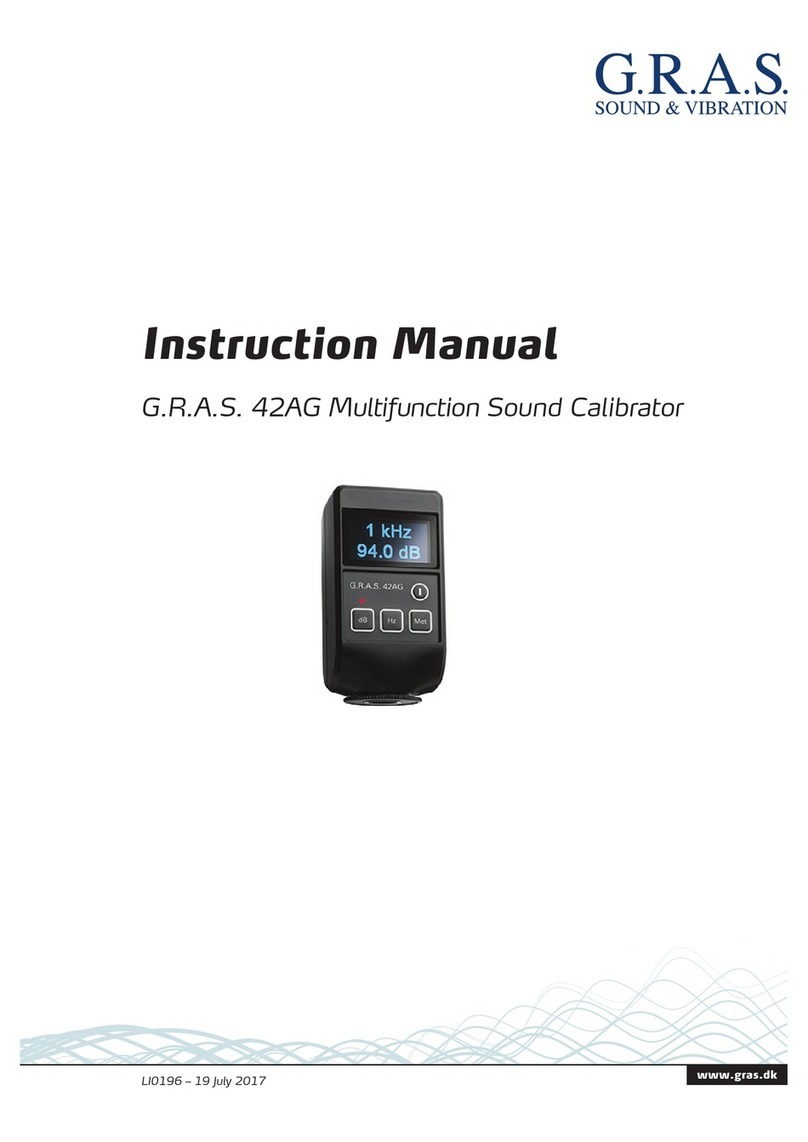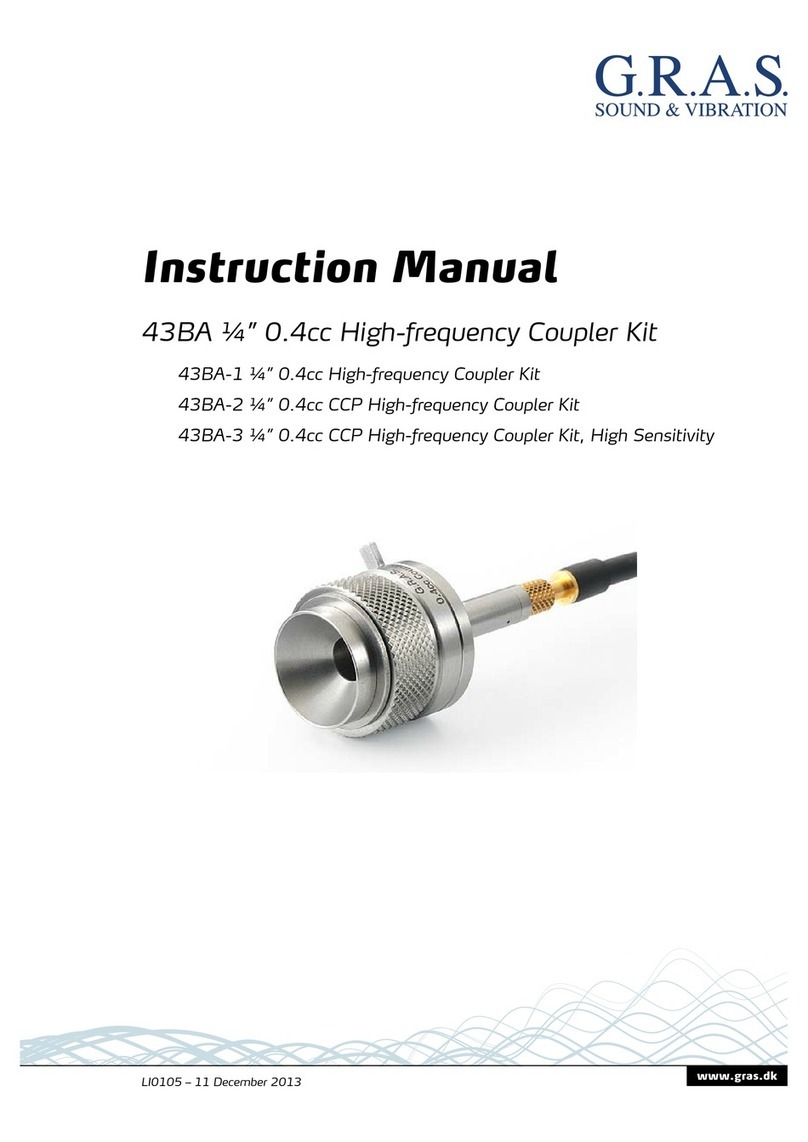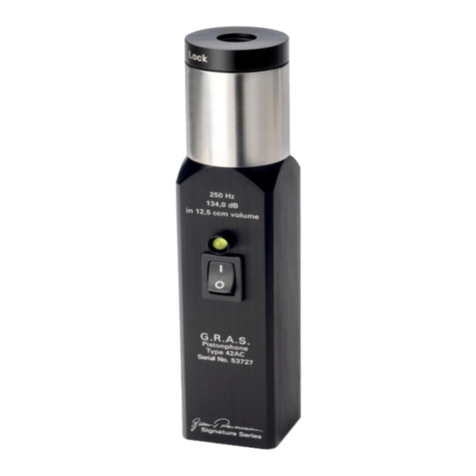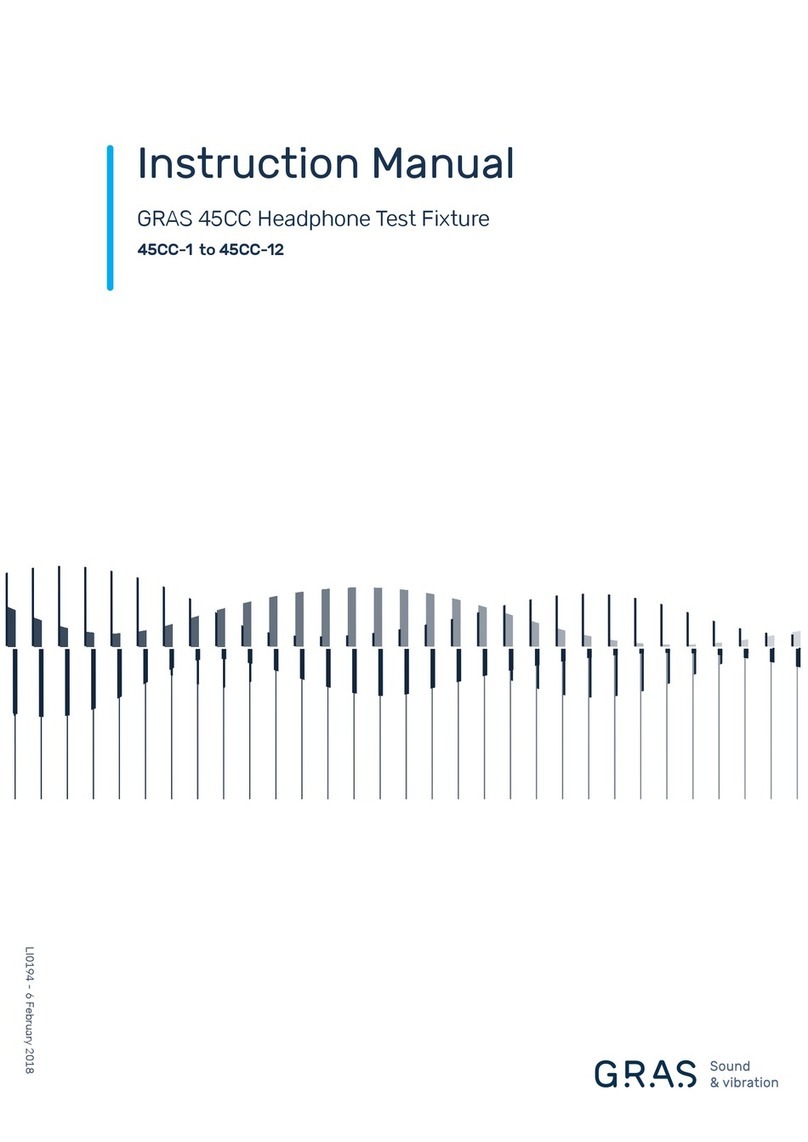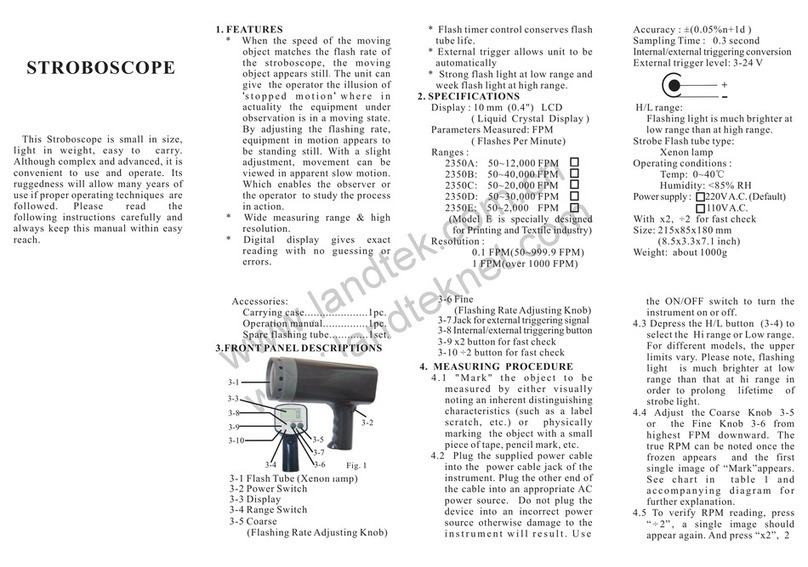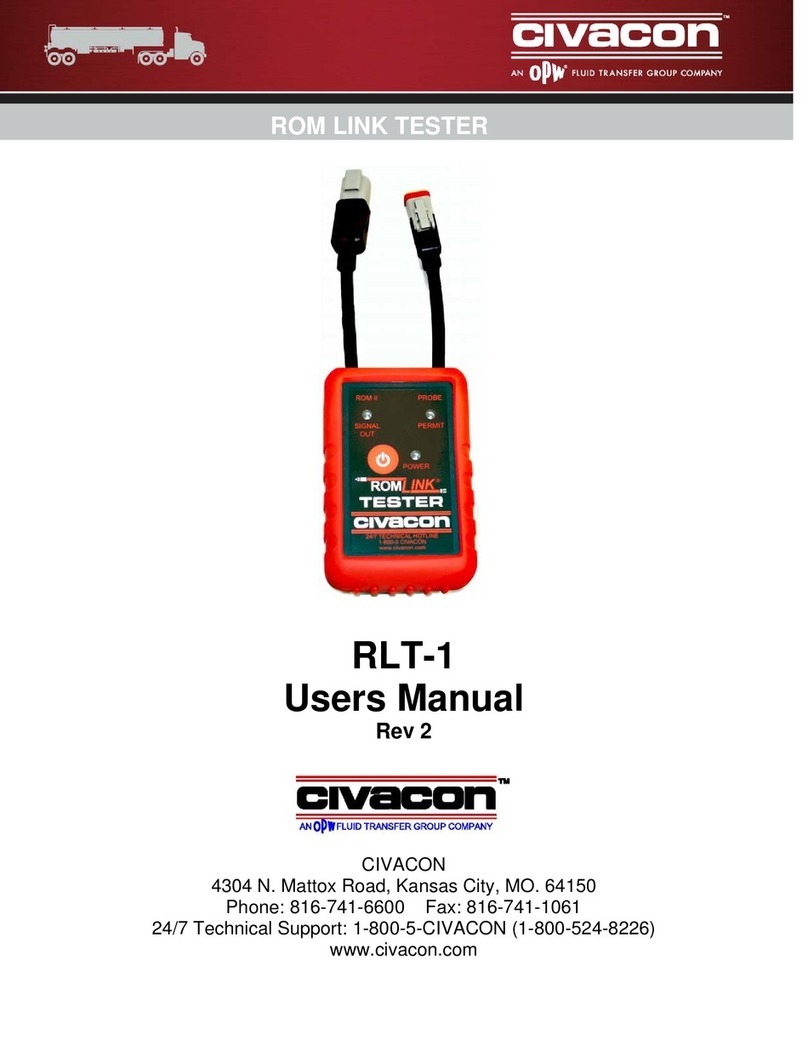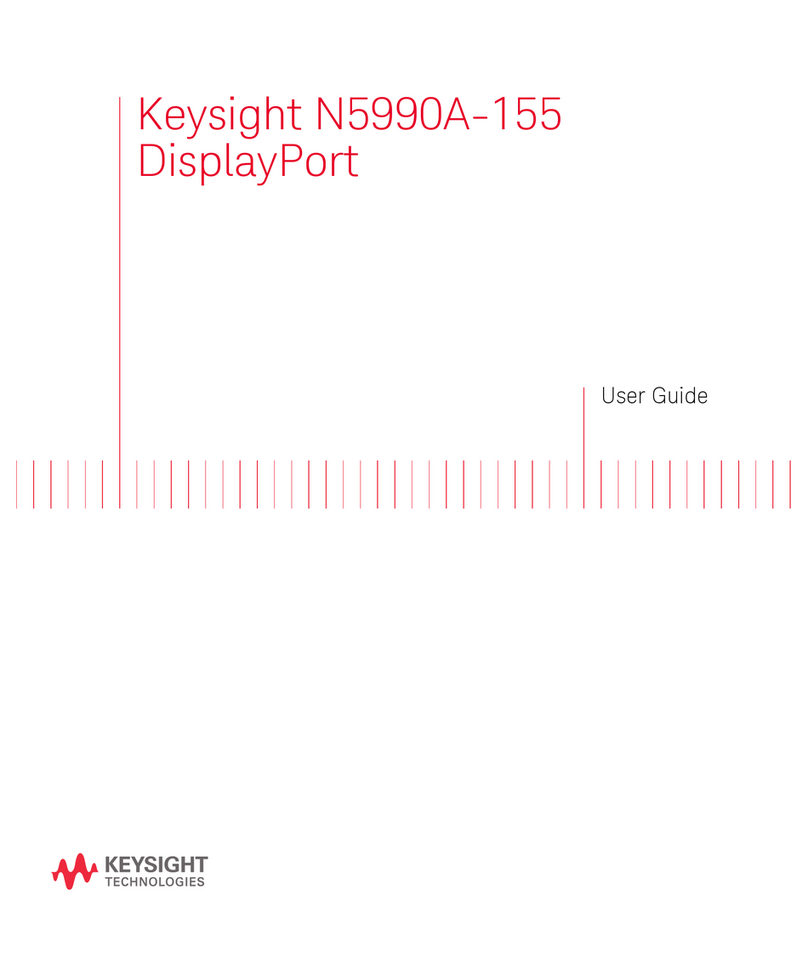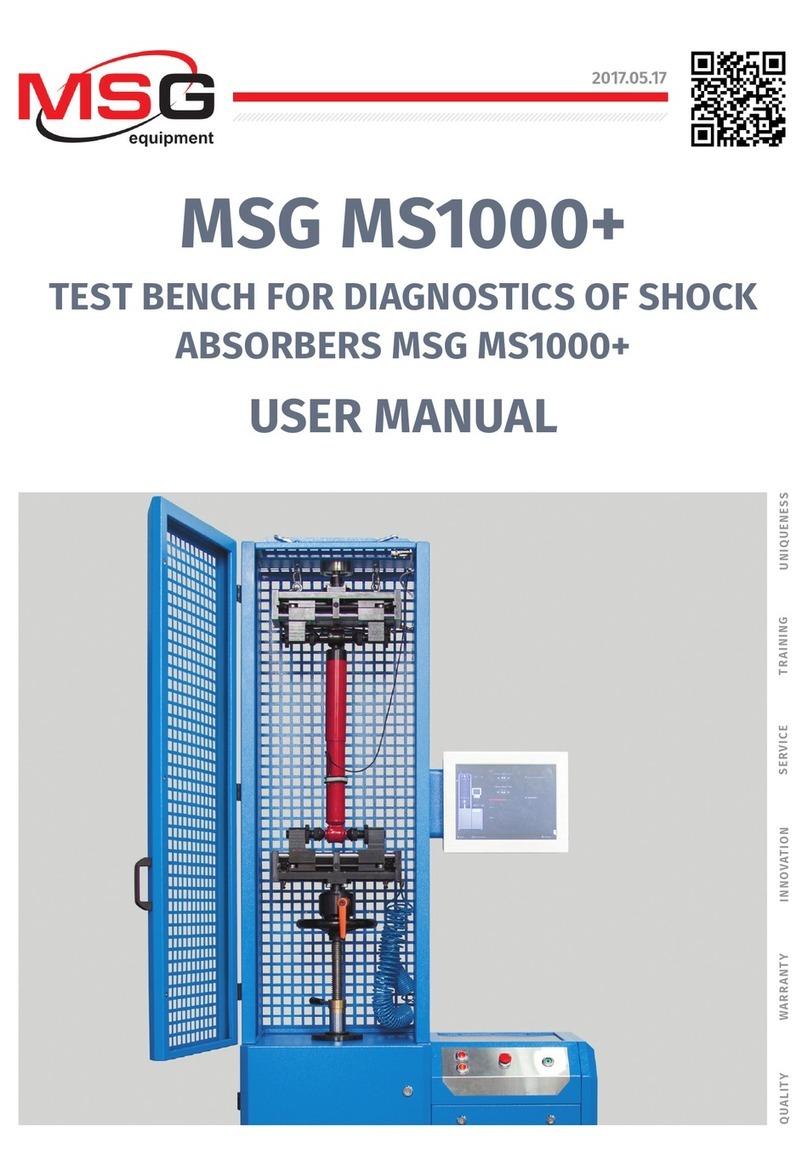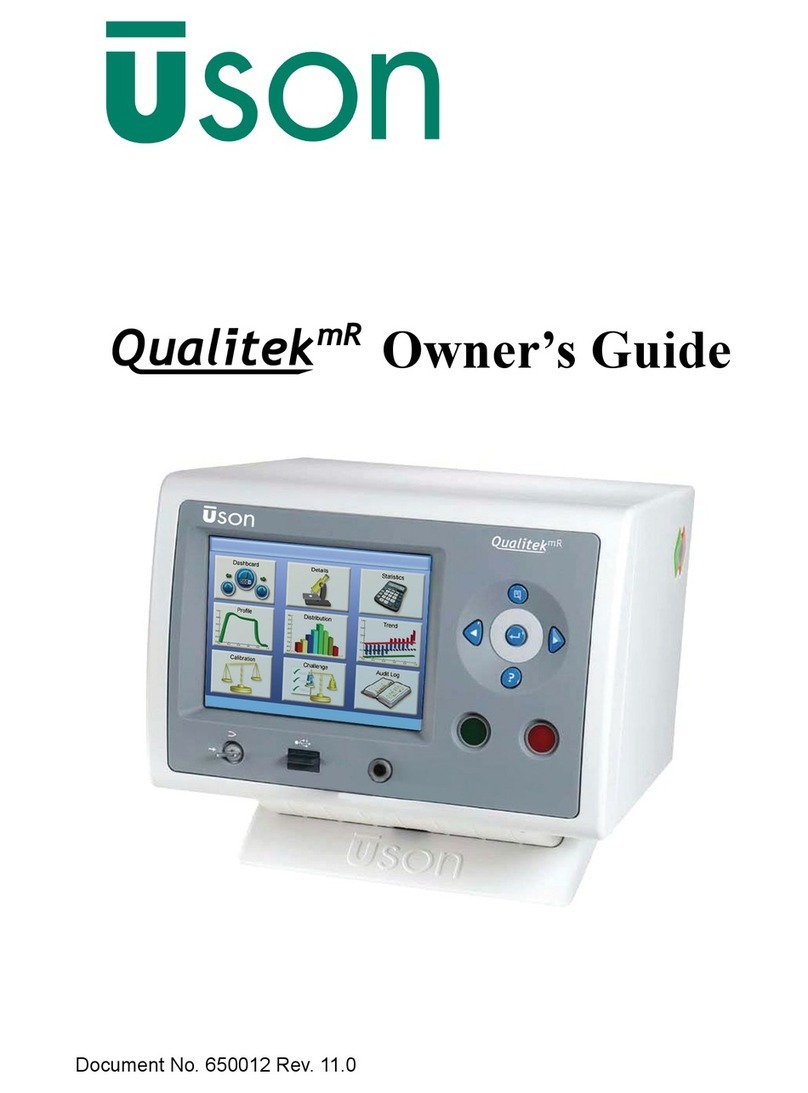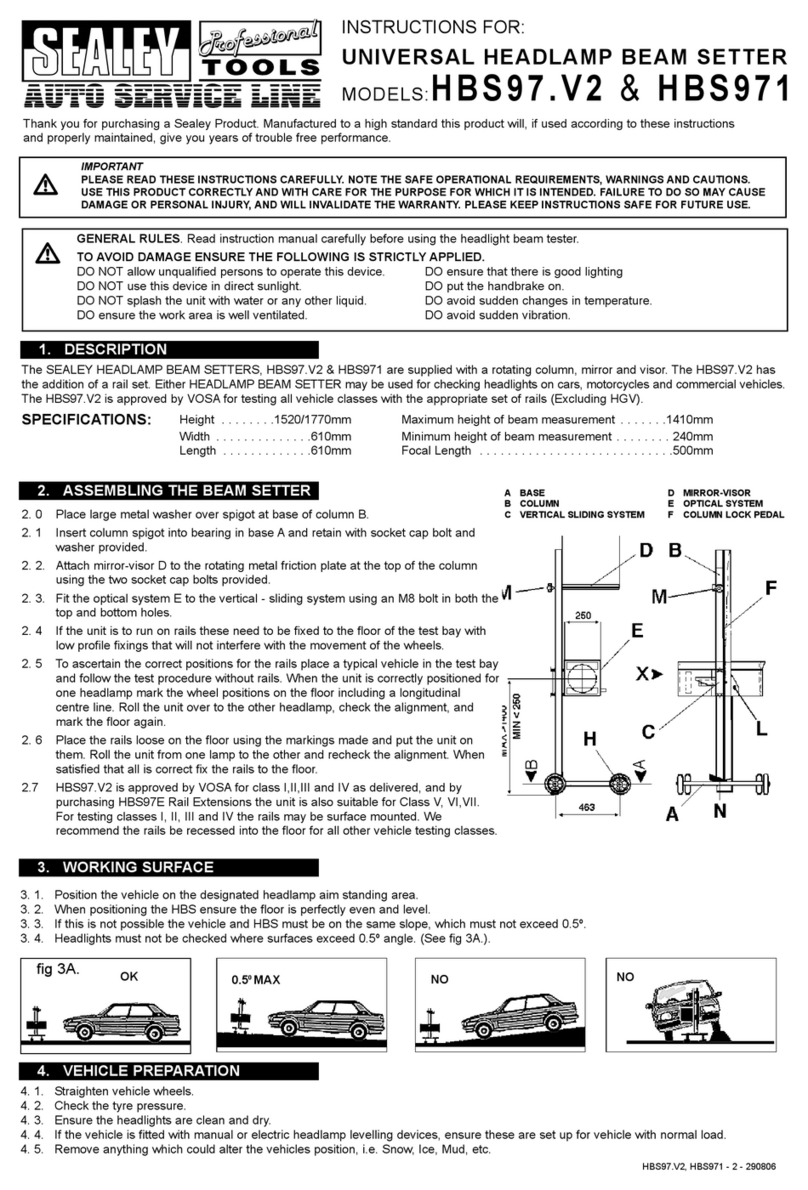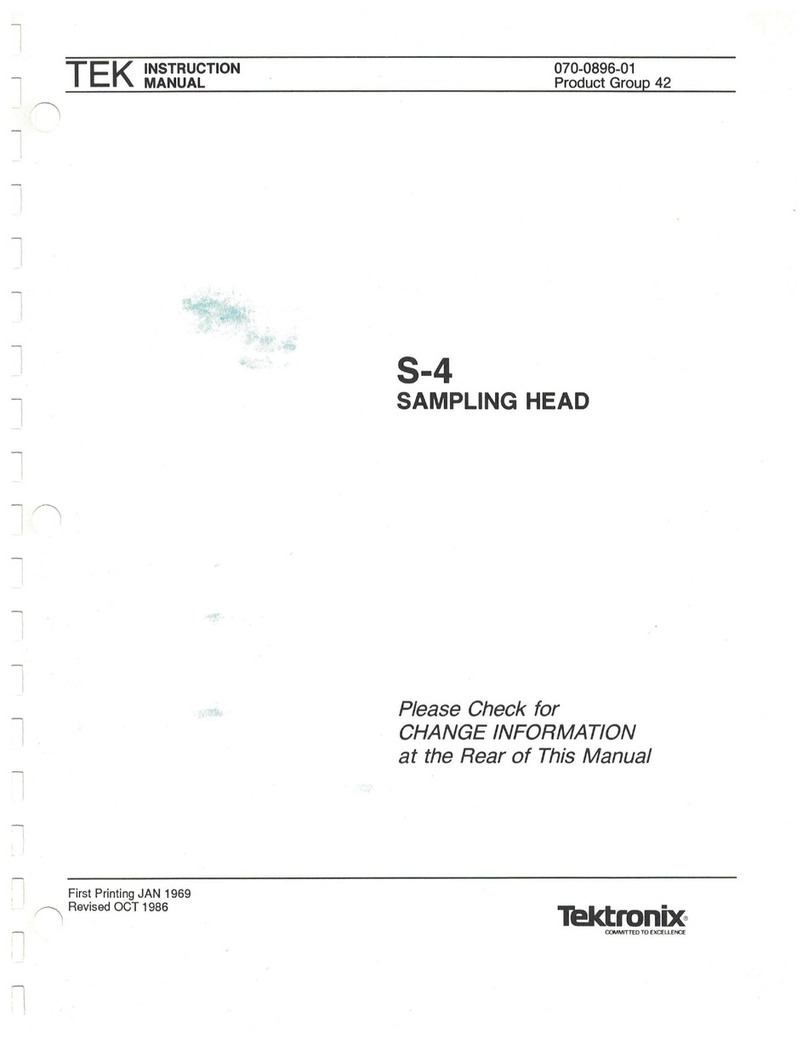G.R.A.S. 43AE User manual

Instruction Manual
43AE Ear Simulator Kit According to ITU-T Rec. P57 Type 3.2
43AE-S1 Ear Simulator Kit According to ITU-T Rec. P57
Type 3.2, prepolarized
www.gras.dk
LI0070 – 28 June 2017

Revision History
Revision Date Description
1 28 June 2017 Extracted from Earbook as separate document
Any feedback or questions about this document are welcome at gras@gras.dk.
Copyright Notice
© 2005-17 G.R.A.S. Sound & Vibration A/S
http://www.gras.dk
Any technical documentation that is made available by G.R.A.S. is the copyrighted work of
G.R.A.S. and is owned by G.R.A.S.
The content in this document is subject to change without notice. G.R.A.S. Sound & Vibration A/S
is not liable or responsible for any errors or inaccuracies that may appear in this document.
Trademarks
Any other product names mentioned in this document may be trademarks or registered trade-
marks of their respective companies and are hereby acknowledged.
2
LI0070 – 28 June 2017

Contents
Introduction.................................................................................. 4
Components.............................................................................................. 4
Additional Equipment ................................................................................. 4
The 4 stages of the Test Procedure.................................................... 6
1: Setting up the Ear Simulator ................................................................... 6
2: Calibration............................................................................................. 7
3: Placing the Ear Simulator on the Earpiece/Earphone................................... 8
4: Applying the Test Signal ......................................................................... 8
Frequency Response of the 43AE .............................................................. 10
Warranty, Service and Repair......................................................... 11
Calibration............................................................................................... 11
Warranty................................................................................................. 11
Service and Repairs.................................................................................. 11
Appendix
The RA0045 Ear Simulator ........................................................... 12
Introduction ............................................................................................. 12
Components............................................................................................ 12
Level Calibration ...................................................................................... 13
Frequency Calibration of the RA0045......................................................... 15
3
LI0070 – 28 June 2017

Introduction
The 43AE Ear Simulator Kit is for acoustically testing supra-aural 1 earphones, telephone hand-
sets and loudspeakers, and complies with the following international requirements:
ITU-T Recommendation P.57 (08/96) “Serie P: Telephone Transmission quality. Objective
measuring apparatus: Artificial ears”.
Components
43AE Ear Simulator Kit
The 43AE Ear Simulator comprises the following main components:
RA0045 IEC 60318-4 Ear Simulator with 40AG microphone included, see page 4
26AC ¼” Preamplifier
RA0001 ¼” - ½” Adapter
RA0056 Low-leak Pinna Simulator
RA0057 High-leak Pinna Simulator
43AE-S1 Ear Simulator Kit prepolarized
The 43AE-S1 uses the same componets as the 43AE except:
RA0045 IEC 60318-4 Ear Simulator with 40AO microphone included.
26CB ¼” Preamplifier
When assembled as shown in Fig. 1, it is ready for testing supra-aural earphones, telephone
handsets and loudspeakers.
26AC
¼" Preamplifier
RA0045
IEC 60318-4
Coupler
RA0001
¼" - ½” Adapter
Caution! When attach-
ing RA0001 to the
RA0045, use only
gentle finger force.
Fig. 1. Assembled 43AE Ear Simulator Kit
1An earphone applied externally to the ear
4
LI0070 – 28 June 2017

Fig. 2 shows an exploded view of its user-serviceable components.
RA0001 Adapter
screws onto the
RA0045
Caution! When attach-
ing RA0001 to the
RA0045, use only
gentle finger force
26AC ¼" Preamplifier
(shown) or 26CB
RA0045 Ear Simulator
screws into one of the
Pinna Simulators
Simulated
ear canal
extension
Fig. 2. Exploded view of all the user-serviceable components of the 43AE Ear Simulator Kit
5
LI0070 – 28 June 2017

Additional Equipment
The following additional equipment is required for making the necessary measurements:
1) Power supply for the 26AC,¼” Preamplifier
e.g. the G.R.A.S. 12AK Power Module.
2) Calibration-check source for the Ear Simulator, e.g. the G.R.A.S. 42AA Pistonphone which
produces 114 dB re. 20 μPa (10 Pa) at 250 Hz
3) Audio signal generator capable of generating one or more of the following within the audio
frequency range 2:
logarithmically swept tones
pink noise
This audio signal is fed (directly or indirectly) to the earphone.
4) Audio frequency analyser capable of one or both of the following:
wide band measurement
⅓ octave-band measurement
The audio analyser receives, via the 12AK, the signal picked up by the Ear Simulator, and,
depending on whether this is a swept tone or pink noise, will:
a) measure the response of the earphone to the swept tone
Or
b) measure the response of the earphone to the pink noise in terms of ⅓ octave bands
Items 3 and 4 could be combined in the same unit, e.g. a computer fitted with suitable hardware
and software for A/D and D/A conversions in order to simulate both a signal generator and an
analyser. Fig. 3 shows a block diagram of a possible set-up for making tests.
Computer with hardware
and software for simulat-
ing:
a signal generator capable
of generating logarithmi-
cally swept tones and/or
pink noise
an audio frequency analyser
capable of wide band and/
or ⅓octave band measure-
ments
Signal from generator to earphone
Output to analyser
12AK Power Module
43AE with telephone
Input from
preamplifier
Fig. 3. Block diagram of a complete set-up for making tests
2For example from 50Hz to 10 kHz
6
LI0070 – 28 June 2017

The 4 stages of the Test Procedure
Using the telephone as a typical example, the basic stages in the test procedure are:
1) Setting up the Ear Simulator, e.g. as shown in Fig. 3
2) Calibration check using the G.R.A.S. 42AA Pistonphone with a special adapter for the 43AE
3) Placing the Ear Simulator over the earpiece of the telephone (see example in Fig. 4)
4) Applying a signal to the telephone and analysing the output from the microphone.
Depending on requirements, the signal applied to the telephone could be:
a swept tone, e.g. under laboratory conditions
pink noise, e.g. during mass production of telephones
Pink noise testing is usually quicker, and more economical, than using swept tones.
The following sections deal in more detail with each stage of the test procedure.
1: Setting up the Ear Simulator
Note: the terms generator and analyser refer to a set up which simultaneously sends the test
signal to the earphone and analyses the signal picked up by the Ear Simulator.
With the Ear Simulator assembled and everything switched on, proceed as follows:
1) 12AK Power Module
Connect the free end of the preamplier cable to the Lemo Input socket.
Connect, via a suitable cable, the BNC Output to the input of the analyser.
Select Lin.
Select a Gain that is within the input range of the analyser.
2) Telephone
Connect the earphone of the telephone to the signal output of the generator.
3) Adjust the signal output level from the generator to lie within the normal working range of
the earphone.
Fig. 4. Place the Ear Simulator centrally over the earpiece of the telephone
7
LI0070 – 28 June 2017

2: Calibration
Important! do not extract the microphone housed in the RA0045 Ear Simulator since this will
invalidate the factory calibration. If it ever becomes necessary to extract the microphone, use the
special tool RA0071 available from G.R.A.S.
The following procedure, using a G.R.A.S. Pistonphone, should preferably be carried out at the
following times:
a) before a rst-time use of the 43AE to establish a baseline for subsequent checks
b) thereafter at appropriate intervals to check for repeatability
The Pistonphone must be fitted with a 1” Microphone Coupler RA0023 and used with a special
Adapter RA0119 for the 43AE, both available from G.R.A.S.
1) The set up for the calibration check is shown Fig. 5.
2) Make sure that the rubber seal of the Pinna Simulator seats firmly inside the Adapter.
3) Switch the Pistonphone on.
4) Set the Gain on the 12AK to 0.
5) Set the analyser to either wide band or to the ⅓ octave band whose centre frequency is 250 Hz.
6) When conditions are stable, note the reading in millivolts.
For a microphone of nominal sensitivity (12.5mV/Pa) and a nominal Pistonphone signal of
114 dB, an approximate value for the Low-leak Pinna Simulator RA0056 is:
• 95 mV (representing a drop of ≈ 2.4 dB)
7) Repeat, if required, with the High-leak Pinna Simulator RA0057 fitted, a corresponding
approximate value is:
• 15 mV (representing a drop of ≈ 18.4 dB)
RA0023
1" Coupler
RA0119
Pistonphone Adapter
RA0056 Low-leak
Pinna Simulator
Fig. 5. Calibration-check set-up. Make sure that the rubber seal of the Pinna Simulator seats firmly inside the Piston-
phone Adapter
8
LI0070 – 28 June 2017

3: Placing the Ear Simulator on the Earpiece/Earphone
In cases of production testing, this is normally taken care of automatically. Whether automatic or
manual, the Ear Simulator must be centrally placed over the earpiece/earphone being tested so
that the sound is transmitted directly into the Ear Simulator. See example in Fig. 4.
4: Applying the Test Signal
The following describes typical procedures for applying:
a) a swept signal
b) pink noise
and refers to some typical results.
In both cases, it is assumed that the generator and analyser work to produce constant-confidence
results (i.e. maintaining a constant β T product) in real time throughout the frequency range of
interest and make the measurement data available graphically and numerically.
Swept Signal
With everything set up as described above, proceed as follows:
a) set the generator to oscillator mode
b) set the analyser to at response
c) initiate a constant-level logarithmic sweep 3 on the generator.
The analyser will follow the response of the Ear Simulator to the earphone throughout the
sweep and record and display the results accordingly.
Pink noise
With everything set up as described above, proceed as follows:
a) set the generator to pink noise mode and start generating.
b) set the analyser to ⅓ octave-band mode 3 and wait until conditions are stable.
c) start the analyser.
The analyser will record the response of the Ear Simulator to the earphone for each ⅓ octave
band and record and display the results accordingly.
In both cases, curves showing the upper and lower tolerance levels for the frequency range of
interest could be superimposed on the graphical displays.
3For example from 50Hz to 10 kHz
9
LI0070 – 28 June 2017

Fig. 6. Frequency response curves of the 43AE fitted with a low-leak pinna simulator re. 1kHz.
Frequency Response of the 43AE
For measurement purposes, the 43AE is a simulation of an ear drum, ear canal and pinna
4.
The diaphragm of the built-in microphone simulates the ear drum and occupies the position
known as the DRP
5. The simulated ear canal is the hole through which sound reaches the micro-
phone (see Fig. 2). The ERP
6lies at the entrance of the outer ear. It is also used as the listening
point for the handset of a telephone (see Fig. 7 and Fig. 8).
Fig. 5.6 shows the frequency response of an IEC 60711 Ear Simulator Type 43AE fitted with a
Low-leak Pinna Simulator RA0056 for both open and closed-ear conditions. At any given fre-
quency f, the corresponding difference ∆
f between the sound levels at the ERP and DRP is given
as follows:
∆
f= DRP
L,f – ERP
L,f
In certain cases, for example when testing telephones, ERP
L,f could be of interest since it repre-
sents the signal originating from the ear piece of a telephone, whereas the microphone buried in
the ear simulator is exposed to, and measures, DRP
L,f .
4The part of the outer ear that projects from the head
5(ear)Drum Reference Point
6Ear Reference Point
10
LI0070 – 28 June 2017

Z-axis
X-axis
Y-axis
ERP at origin of X-Y-Z axes
Fig. 7. Showing the basic configuration for testing the microphone of a telephone handset. The ear piece lies in the plane
of the Y-Z axes. See Fig. 8 for geometrical details
Y-axis
AEN
140mm
Lip ring
REF
136mm
15½°
22°
18°
12.9°
39°
13°
X-axis
ERP
Approximate
orientation of Lip
ring
Z-axis points away
from the reader
Fig. 8. Showing where the Lip-ring should be for both AEN and REF positions. The angular distances of 39° and 13° (in
that order) will move the handset from the AEN postion to the LRGP
11
LI0070 – 28 June 2017

Warranty, Service and Repair
Calibration
Before leaving the factory, all G.R.A.S. products are calibrated in a controlled laboratory environ-
ment using traceable calibration equipment.
We recommend a yearly recalibration at minimum, depending on the use, measurement environ-
ment, and internal quality control programs.
We recommend calibration prior to each use to ensure the accuracy of your measurements.
Warranty
Damaged diaphragms in microphones can be replaced. The microphone diaphragm, body, and
improved protection grid are made of high-grade stainless steel, which makes the microphone
resistant to physical damage, as well as corrosion caused by aggressive air or gasses. This,
combined with the reinforced gold-plated microphone terminal which guarantees a highly reli-
able connection,enables G.R.A.S. to offer 5 years warranty against defective materials and
workmanship.
The warranty does not cover products that are damaged due to negligent use, an incorrect power
supply, or an incorrect connection to the equipment.
Service and Repairs
All repairs are made at G.R.A.S. International Support Center located in Denmark. Our Support
Center is equipped with the newest test equipment and staffed with dedicated and highly skilled
engineers. Upon request, we make cost estimates based on fixed repair categories. If a product
covered by warranty is sent for service, it is repaired free of charge, unless the damage is the
result of negligent use or other violations of the warranty. All repairs are delivered with a service
report, as well as an updated calibration chart.
WEEE directive:
2002/96/EC
CE marking directive:
93/68/EEC
Manufactured to conform with:
RoHS directive:
2002/95/EC
G.R.A.S. Sound & Vibration continually strives to improve the quality of our products for our
customers; therefore, the specifications and accessories are subject to change.
12
LI0070 – 28 June 2017

Appendix
The RA0045/RA0045-S1 Ear Simulator
Introduction
The RA0045/RA0045-S1 Ear Simulator is for making acoustic measurements on earphones coupled
to the human ear by ear inserts such as tubes, ear moulds or ear tips. It is delivered with a built-in
40AG ½” pressure microphone and an individual calibration chart for the coupler-microphone combi-
nation.
Important! do not extract the microphone housed in the RA0045 since this would invalidate the
factory calibration.
The ear simulator complies with the following international requirements:
IEC 60318-4 Occluded-ear simulator for the measurement of earphones coupled to the ear
by ear inserts
ITU-T Recommendations P.57 Series P: Telephone transmission quality, Objective measuring
apparatus: Artificial ears.
Components
It comprises the following user-serviceable components:
GR0407 Ear Simulator Housing
GR0408 External-ear Simulator
GR0409 Union Nut
The RA0045 is delivered as shown in Fig. 9, to the left. An exploded view of its user-serviceable
components is shown in Fig. 9, to the right.
GR0409
Union nut
GR0407
Ear Simulator
housing)
GR0408
External-ear
Simulator
View ‘A’ show-
ing microphone
cartridge (do not
remove it!)
A
Fig. 9. RA0045/RA0045-S1 Ear Simulator as delivered (left) and its user serviceable parts
13
LI0070 – 28 June 2017

Preamplifiers
With the 43AE, the externally polarized RA0045 is delivered with a standard preamplifier, e.g. a
26AC ¼” Preamplifier fitted with an adapter.
With the 43AE-S1 the prepolarized RA0045-S1 is delivered with the 26CB ¼” Preamplifier
fitted with an adapter.
Characteristics
The acoustic input impedance of the RA0045 closely resembles that of the human ear and, as a
result, loads a sound source in very much the same way.
It can be used with:
Low-leak Pinna Simulator Type RA0056.
High-leak Pinna Simulator Type RA0057
in accordance with ITU-T Recommendation P.57 (08/96) “Series P: Telephone transmission qual-
ity, Objective measuring apparatus: Artificial ears ”, Type 3.1-3.4.
The RA0045 embodies a number of carefully designed volumes connected via well-defined and
precisely tuned resistive grooves. In an equivalent electrical circuit, capacitors would represent the
volumes, and inductance and resistance would represent respectively air mass and air flow within
the resistive groves. Fig. 10 shows a typical coupler frequency response of the RA0045.
Fig. 10. Type RA0045 - typical coupler frequency response re. 500Hz
The input impedance is measured using a special impedance probe as described in ITU-T Recom-
mendations P.57 (08/96). This measures the impedance of the RA0045 as seen from the Ear
Reference Point (ERP). The impedance is defined as the ratio of the sound pressure at the ERP
to the corresponding particle velocity. The sound pressure is measured with a probe microphone
while a constant particle velocity is maintained via a high acoustic impedance sound source.
14
LI0070 – 28 June 2017

Level Calibration
This paragraph describes level calibration using a pistonphone. This is the kind of calibration you
would most often perform prior to measuring. How to perform a frequency calibration is described
on page 16.
Do not attempt to remove the microphone from the RA0045. You will be calibrating the RA0045
as a whole with a Pistonphone fitted with a ½” coupler. This, in effect, increases the coupler
volume such that the signal from the Pistonphone will be reduced by 1.03dB .
1) Snap the spring-loaded clamp (see Fig. 1) to its upright position, or remove it.
2) Unscrew the collar of the Pistonphone and remove the O-ring (see Fig. 11).
Entrance to
Pistonphone coupler
O-ring
Collar
RA0045
Ear Simulator
Fig. 11. Calibration using the Pistonphone
a) Unscrew Pistonphone collar and remove O-ring.
b) Place coupler over RA0045, push gently down to the stop
c) Switch on
3) Place the coupler of the Pistonphone over the RA0045, push it gently down to the stop and
switch on.
4) Set the analyser to either wide band or to the ⅓octave band whose centre frequency is
250Hz.
5) When conditions are stable, adjust the analyser so that it correctly gauges the Pistonphone
signal (nominally 114 - 1.03 = 112.97dB). See Pistonphone manual for making barometric
corrections.
6) Switch the Pistonphone off and remove it from the RA0045.
7) Re-assemble the pistonphone.
15
LI0070 – 28 June 2017

Frequency Calibration of the RA0045/RA0045-S1
This section describes how to perform a frequency calibration using a 40BP ¼” Microphone as
sound source. Fig. 12 shows how to configure the coupler for calibration using the accessories
provided, and Fig. 13 shows how these should be used with:
40BP ¼” Microphone
RA0086 Transmitter Adapter
GR0433
Calibration Adapter
GR0434
Stop Washer
Fig. 12. Assembled and exploded views of the coupler itemising user-serviceable accessories for individual calibration
The ¼” microphone is used as a high-impedance sound source. The complete set-up is shown in
. The computer in Fig. 14 is capable of concurrently generating and measuring audio frequency
signals. The 14AA Actuator Supply receives a swept tone generated by the computer and sends
this, superimposed on a polarisation voltage of 200 VDC, to the coupler mounted in the jig, also
shown in Fig. 14. The coupler picks up the resulting audio signal and sends this back to the com-
puter which traces out and displays the coupler response. An example of a displayed response is
shown in .
40BP ¼" Microphone
without protection grid
GR0434
Stop Washer
RA0086
Transmitter
Adapter
The assembled components
are pushed into the coupler
Fig. 13. Assembled and exploded views showing how the GR0434 is used when calibrating the Ear Simulator. 40BP and
RA0086 are available from G.R.A.S.
16
LI0070 – 28 June 2017

Computer with hardware
and software for simu-
lating a signal generator
capable of generating
logarithmically swept
tones and signal analysis
To analyser from Preamplifier
From signal generator
14AA Actuator Supply
To RA0045
RA0045 Ear Simulator set
up for calibration (see Figs.
6 and 7)
Fig. 14. Block diagram of a complete set-up for calibration
Fig. 15. Example of a calibration result using a swept tone
17
LI0070 – 28 June 2017
This manual suits for next models
1
Table of contents
Other G.R.A.S. Test Equipment manuals
Popular Test Equipment manuals by other brands

Textron
Textron Greenlee Communications DataScout 10G user manual
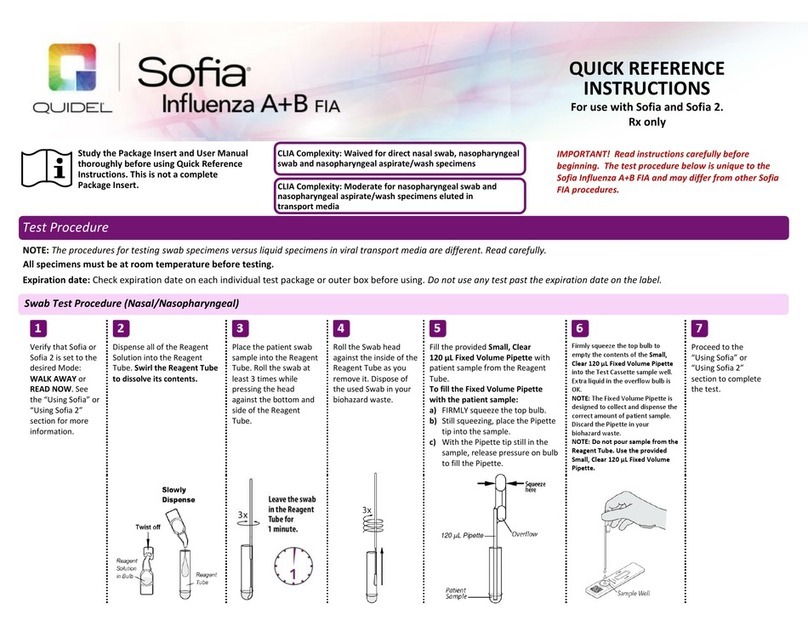
Quidel
Quidel Sofia Influenza A+B Quick reference instructions
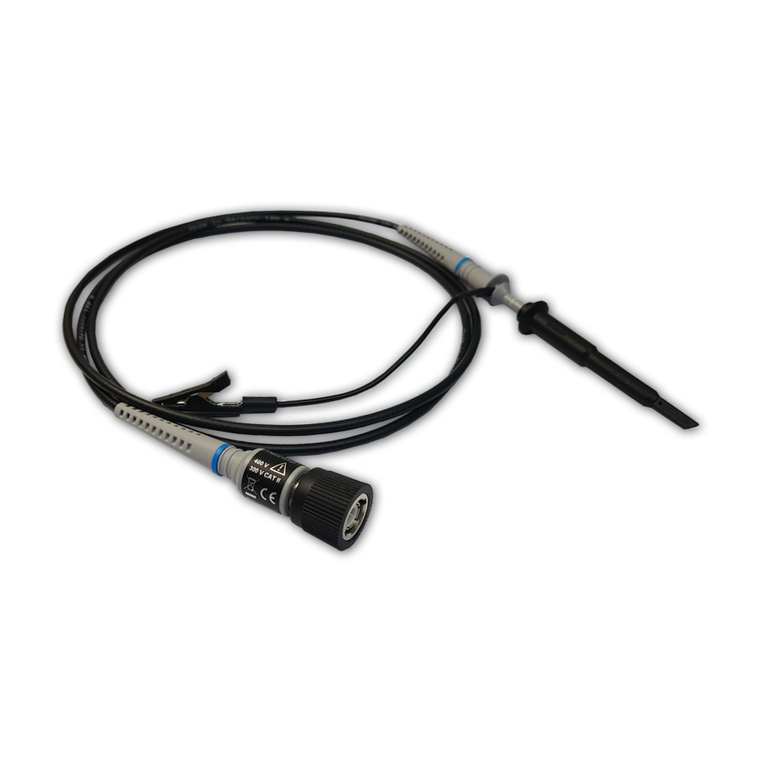
PMK
PMK PML 111O instruction manual

Tempo Fitness
Tempo Fitness Tele-Mate Pro TM-700 instruction manual
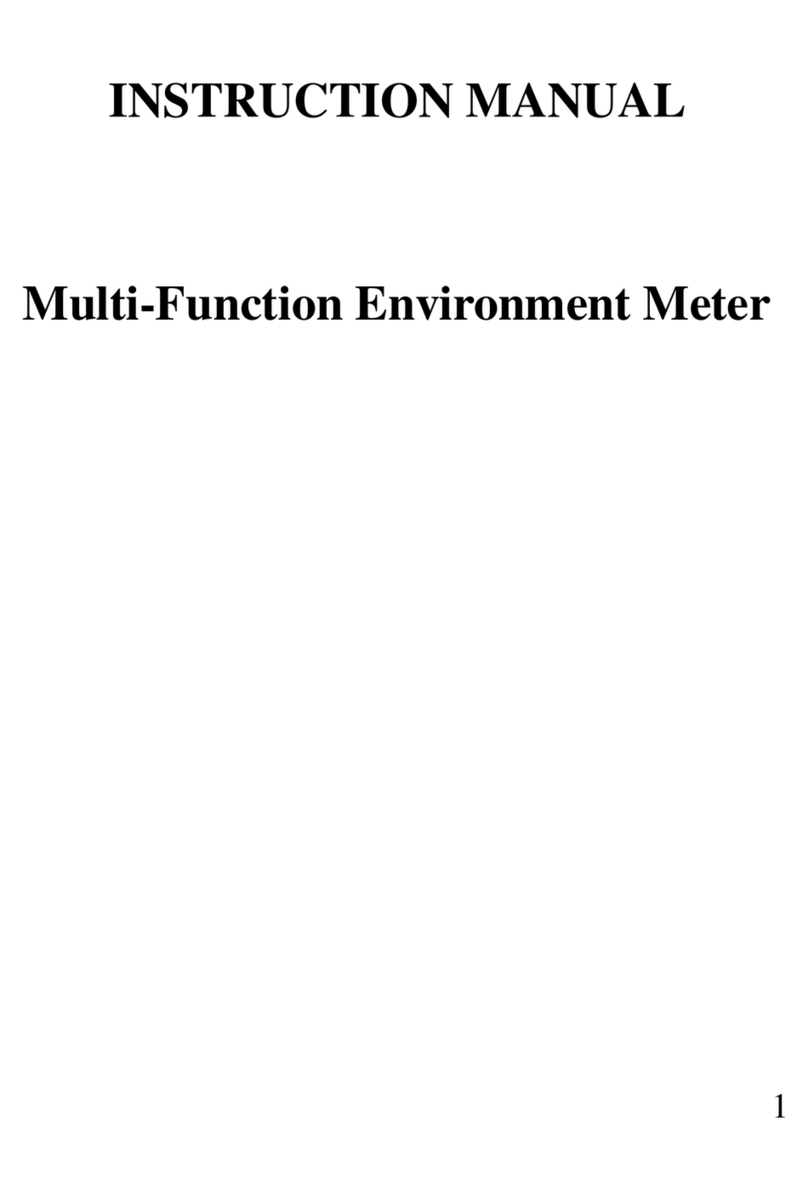
ATP Electronics
ATP Electronics ADT-22 instruction manual
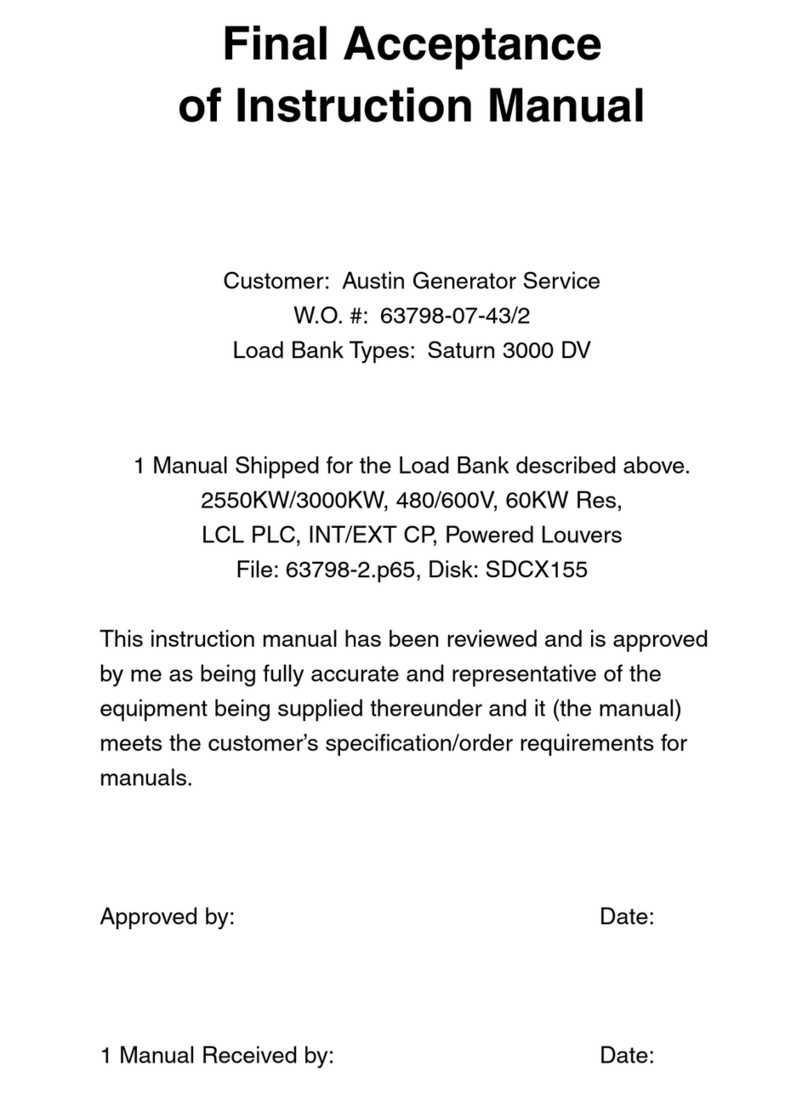
Simplex
Simplex Saturn 3000 DV Technical manual
